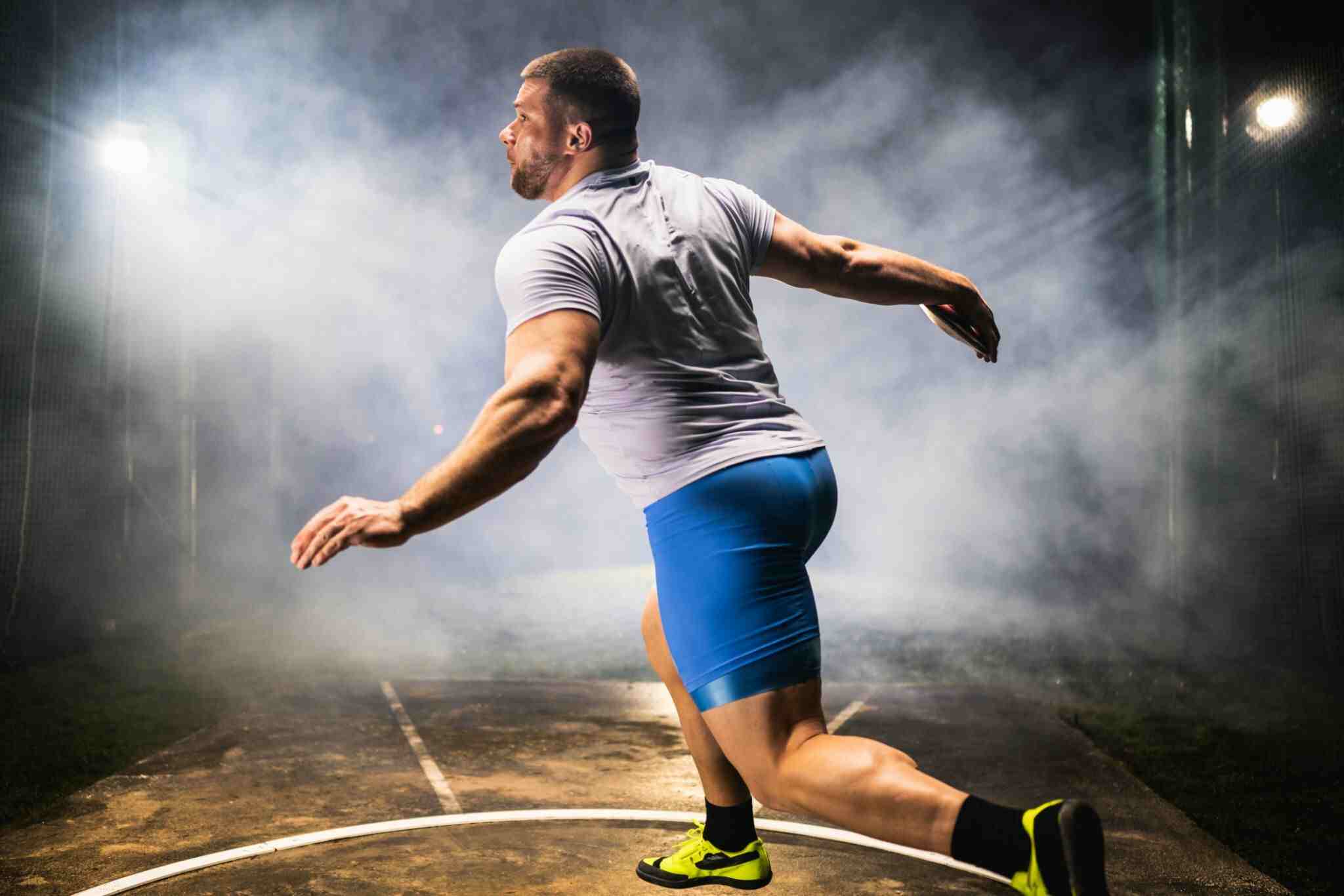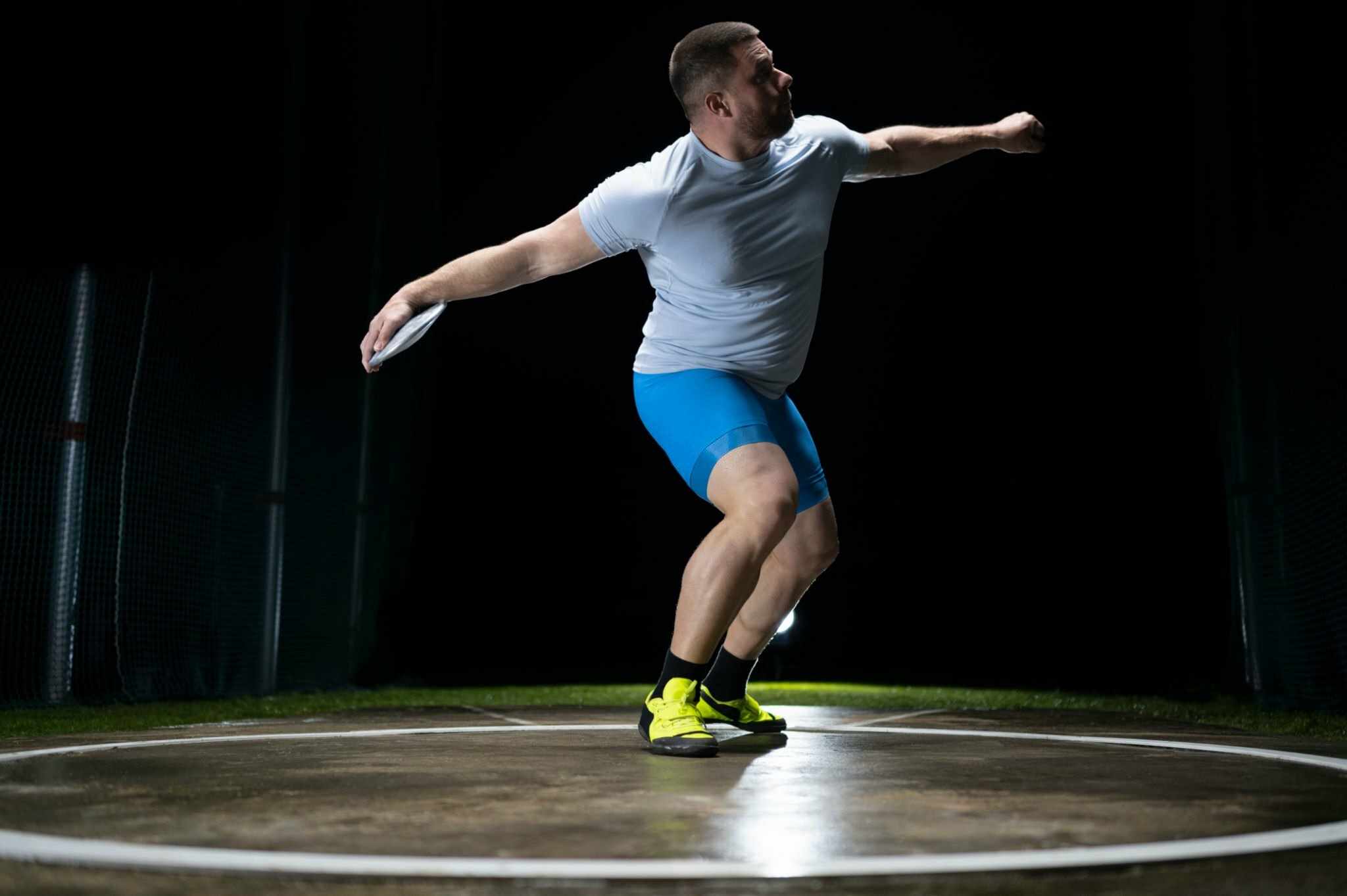The sport of discus throw combines strength, technique, and precision. Whether you’re new, to the world of discus throw or a seasoned athlete looking to improve your skills having a structured training routine is essential.
In this guide we will explore the ins and outs of discus throw training covering everything from the basics to strategies.
Understanding the Fundamentals of Discus Throw
A foundation in the fundamentals is crucial for mastering the art of discus throw. Athletes must pay attention to their footwork, balance, and the intricacies of technique.
The wind-up generates power while an accurate release is paramount. Proper grip and body positioning are emphasized to ensure aerodynamics during flight.
The Science Behind Discus Throw
Discus throw is a blend of physics, biomechanics, and athleticism. To excel in this sport it’s important to understand its principles. If you are searching for discus throw training then you can click this website.
Discus throw isn’t about athleticism, it’s also a scientific endeavor. Athletes utilize physics, biomechanics, and aerodynamics to achieve peak performance.
The rotational technique involves torque and angular momentum as energy from the athlete converts into force applied on the discus.

Selecting the Right Discus
Choosing the discus is a decision for throwers. It’s important to consider factors like weight, rim thickness, and the material composition of the discus.
The discus you choose should match your skill level, strength, and throwing style. Beginners usually start with discs. Gradually move on to heavier ones as they improve their technique and strength.
Setting Up Your Training Space
When setting up your training space for discus throwing it is essential to create an environment. Make sure there are no obstacles in the way and that you have space for rotational technique.
A level and maintained throwing circle is crucial for performance. Having room allows athletes to focus on footwork, balance, and executing throws with a full range of motion.
Building the Foundation: Discus Throw Techniques
The discus throw is a dynamic and challenging athletic event that requires a combination of strength, speed, and technique. Mastering the fundamental techniques is crucial for success in this sport.
Grip and Stance Mastery
In the foundation of discus throwing techniques mastering grip and stance play roles in achieving precision and control. Athletes spend time perfecting their grip to find that balance between security and fluidity.
The stance serves as an equilibrium that ensures weight distribution during the rotational sequence.
Preparing for Launch- Getting Ready to Throw
The wind-up is a part of the discus throw, where athletes carefully coordinate their movements to set the stage for a launch.
They rotate their bodies in a controlled manner coiling up to store kinetic energy. This phase requires footwork and a combination of strength and agility.
Unleashing Maximum Force – The Key Power Position
In discus throwing the power position is the moment when athleticism meets technique. Athletes aim for a transition, from the wind-up to achieving balance and torque.
Coaches emphasize the importance of foot placement and a strong core to potential energy effectively.

Targeted Training – Exercises Designed for Discus Throwers
Discus throwers improve their skills through a training routine. Strength training focuses on developing core strength, leg power, and rotational muscles necessary for generating throws. Technical drills refine the movements involved in both wind-up and release.
Building Strength -Training Methods, for Discus Throwers
Strategic strength training forms the foundation of a discus thrower’s abilities. Athletes concentrate on developing power in their legs and core which are crucial for executing powerful rotations. Weightlifting plyometric exercises and resistance training sculpt the muscles needed for throws.
Drills to Improve Accuracy
Developing precision in the discus throw involves practice drills. Athletes engage in exercises that focus on refining their grip, body positioning, and rotational mechanics. These drills help build muscle memory ensuring consistency in each throw.
Advanced Techniques- Fine Tuning Your Discus Throw
To enhance their performance in the discus throw athletes must pay attention to footwork, balance, and mental conditioning.
This combination of mastery and strategy empowers discus throwers to surpass their limits and achieve unparalleled accuracy and power in the pursuit of excellence.
Analyzing Videos, for Technique Refinement
In the quest for perfection in the discus throw video analysis becomes a tool. Athletes meticulously study their throws by examining each movement frame by frame.
This technological approach serves as a guiding light refining the throwers’ technique and leading to improvement on their path toward mastering the discus.
Mental Preparation – The Psychological Aspect of Discus Throw
Beyond the aspects, discus throwing requires a strong mental foundation. Athletes engage in preparation to cultivate focus resilience and a winning mindset. Visualization techniques help them envision throws and foster confidence.
Strategies for Competition – Navigating the Throwing Area
Competing in discus throwing calls for planning. The discus throw is more than strength, it requires strategic thinking as well.

Injury Prevention and Recovery: A Holistic Approach
Athletes carefully plan their approach to the throwing ring taking into account factors like wind direction and their competitor’s performances.
Injury prevention and recovery play a role in the training of discus throwers. Resting and allowing the body to heal and rejuvenate are parts of their regimen.
Common Injuries in Discus Throw and How to Avoid Them
Discus throwers are prone to injuries, such as strains in the shoulders lower problems, and elbow injuries due to the repetitive and forceful nature of the sport. To minimize these risks athletes focus on targeted strength training to strengthen areas.
Regular monitoring, early intervention, and a warm-up and cool-down routine contribute to preventing injuries ensuring that discus throwers can avoid pitfalls.
Recovery Strategies for Discus Throwers
Recovery is vital for discus throwers’ overall performance. Athletes prioritize rest to allow their muscles and joints to recover.
Techniques, like ice baths, massage therapy, and compression therapy help reduce training inflammation.
Taking this approach not only prevents burnout but also helps discus throwers consistently perform at their best level while maintaining longevity in their athletic pursuits.
Conclusion
To sum up, becoming proficient in the discipline of discus throw necessitates a method that encompasses not only technique and strength but also mental fortitude and injury prevention.
By grasping the core principles refining your technique integrating training and embracing strategies you can enhance your abilities in discus throw, to unprecedented levels.
Stay dedicated stay focused and let your pursuit in the realm of discus throw serve as a testament to your commitment and deep love, for this sport.



